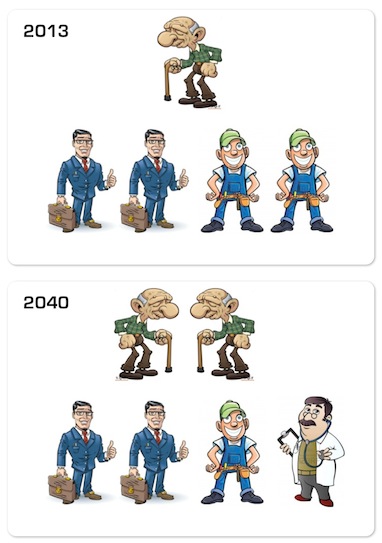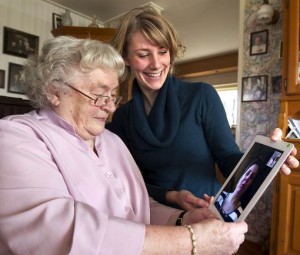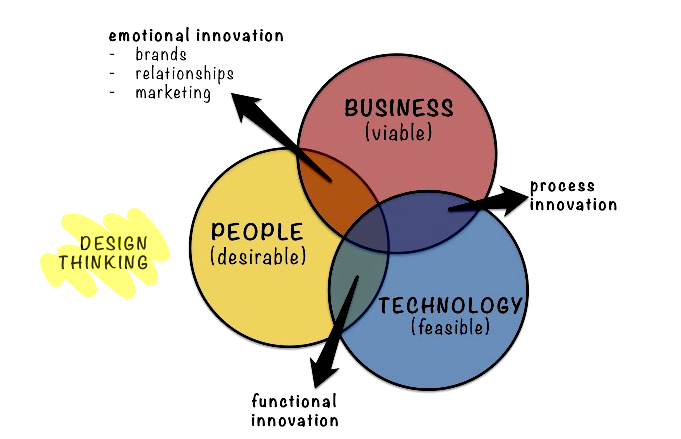The newspapers are elaborating on the topic: ageing makes health care unaffordable. We might not even be able to provide the care, matching the level that we are used to, in the (near) future. I always wonder: why not? Does not new technology especially offers opportunities to turn this negative trend around?
 Demographic figures towards 2040
Demographic figures towards 2040
2,6 million people of 65 and older existed on an amount of 16,7 million Dutch population at the end of 2012, which means a percentage of 15 per cent elderly people. Prognoses of the CBS (Dutch central agency for statistics) show a growth of the amount of Dutchmen until around 17,8 million people in the year 2040. By that time around 4,7 million people are going to be above the age of 65. This is an amount of more than 25% which means one out of four, an increase of ten per cent in 15 years’ time.
Looking at the “working field”, (let us say people among 20 and 65 years old), we will see the next thing happen. There was an amount of ca.10 million between 20 and 65 years (which is about 60%). The CBS expects this amount to have lessened until 9,3 million in 2040 (about 52%). This means a huge shift: more elderly people, less working people.
Specifying to people who have got a job in (or related to) health care: it is 13 per cent of the working field. To be able to keep up the current quality standards in health care in combination with the current procedures of health care workers; it has to become 25 %. This basically means one out of four Dutch working people. A unique task to get this done.
Overemphasis on costs savings
Basically this means that less (working) people will have to provide for the expanding health care; both financially and professionally. This situation causes the Dutch government to take harsh precautions and to demand specific attention of the health care partners.
Health care institutions, pension funds and health insurance companies work really hard to put up a strategy for the future, which means they will have to recalibrate. What strikes me about this discussion is the fact that only finances are discussed, how to make thing cheaper. The fact that technology offers a spectrum of opportunities is only seen as “reduce costs”. In my humble opinon, things go wrong there.
The negative side-effects of such an attitude are:
- Innovations are obstructed (Technical innovations are more expensive at first)
and - Cost reduction based on technology is going to be a target on its own, which separates it from the quality of health care, where technology could be an opportunity to improve the quality of health care.
Technological opportunities as a method
 Technology could help a lot to improve the quality of health care. To reduce expenses health care workers could be replaced in certain situations. For instance by making use of the cuddly animal robots (de aaibare dierenrobots), care robots (zorgrobots) and the medication robot (medicijnrobot) that creates specific medication in a better way than humans can do.
Technology could help a lot to improve the quality of health care. To reduce expenses health care workers could be replaced in certain situations. For instance by making use of the cuddly animal robots (de aaibare dierenrobots), care robots (zorgrobots) and the medication robot (medicijnrobot) that creates specific medication in a better way than humans can do.
This is a great way of thinking although on short terms more possibilities occur in facilitating health care workers. Unfortunately this vision is often missing when people start to think about technology. The possibilities technology provides to help care workers simplify their jobs – care that fits the need of the dependent clients. The flourishing mobile internet connections offer a multitude of possibilities to be of assistance.
Next to this, technology offers people chances to increase their self-reliance or live independently at home. Due to the quick developments in home automation like video calling, WiFi mobile internet and sensor technology… the possibilities are booming.
Focus on the human being; not technology
It is rather curious that providers focus on the offer of technology, while they don´t focus on the fact if people really want this and if they do so, is the item easily accessible and easy to use. People defined as both care recipients and care takers.
In short: in too many cases the available technology is put in the centre, not the pending questions people might have. ‘The three fields of design thinking’ of Tim Brown rise to the surface: as a friend mentioned to me the other day.

Shift in thinking a necessity
The thinking pattern about health care and technology focusses too much on the red (technology) and the blue circle (business model). The yellow circle is underexposed: do people really want this? In my opinion it should be emphasised in case of elderly people or handicapped people. There are a lot of people who would love to but are not able to – what could care technology offer them? Probably an even bigger group of elderly people might be able to but don’t want to. This requires careful thinking about a convenient and safe design because it has to fit into the natural behaviour and lifestyle of individuals. “Technology is amazing when it isn’t in the way”.
This doesn’t mean we should stop developing the blue and red circle – it is about the right mixture. Only the balance should move more to ‘desirable’ than it is the case right now. I am in favour of a bigger part of desirability. Technologies regarding to ‘tomorrow’s health care’ ought to synchronise with different generations of people, bearing in mind both parties, the care recipients and care takers. A lot of work still has to be done. According to the figures towards 2040 we don’t have much time left…. It requires a huge shift in thinking.

Leave a reply